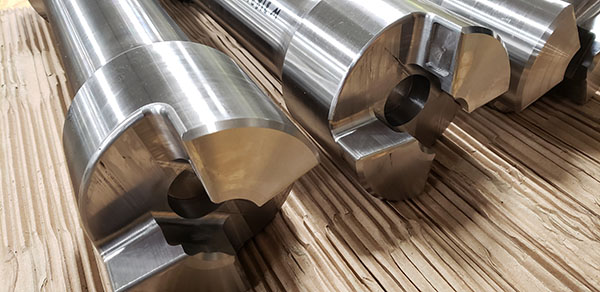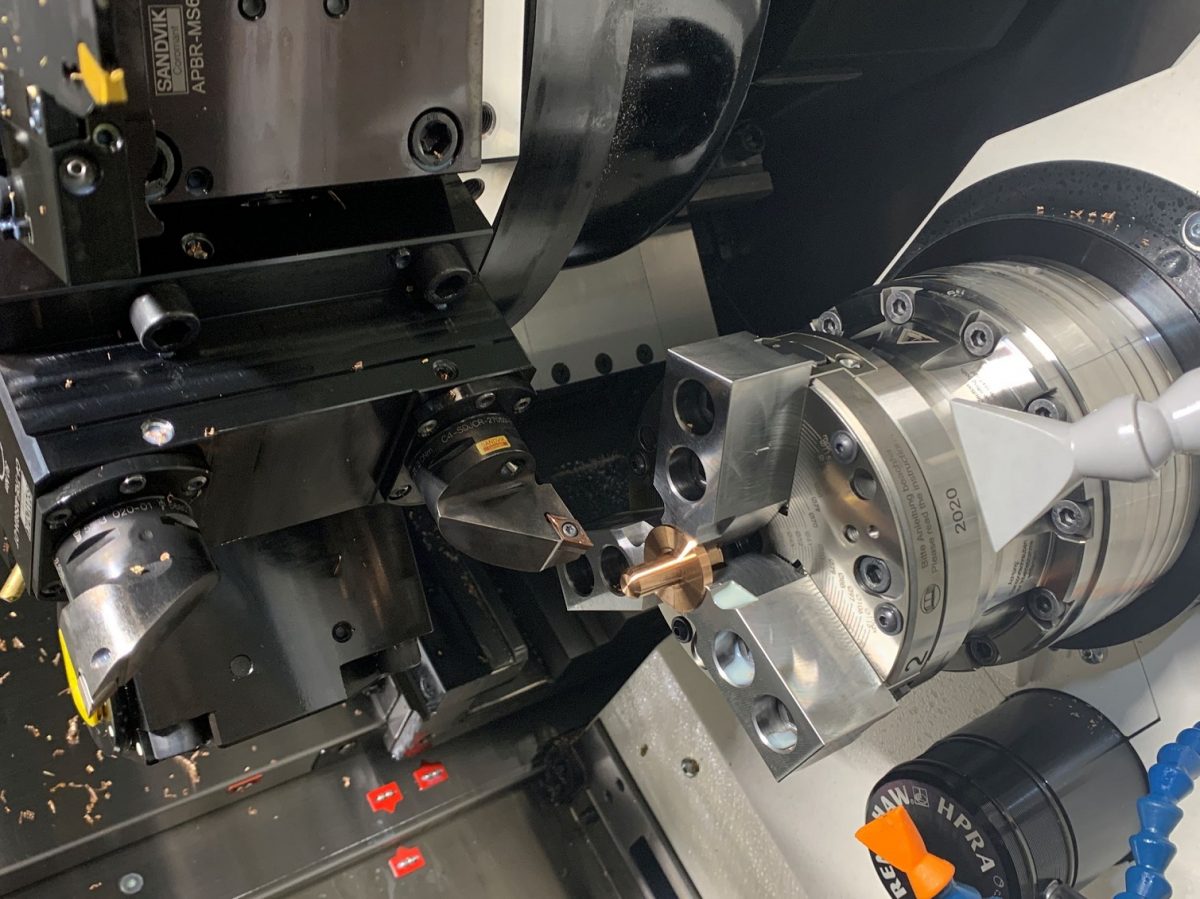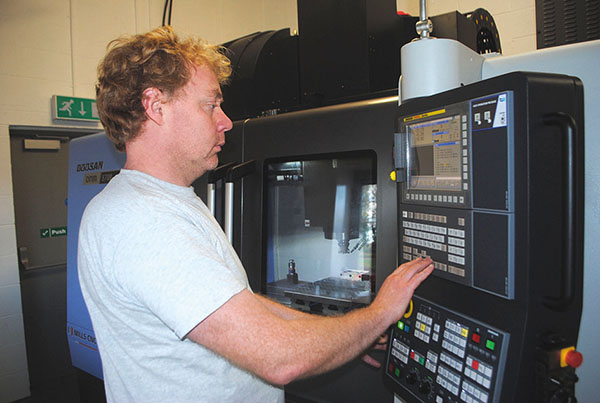
Back in 1997, when physics graduate Paul Cobb asked his father Reg to help him invest in a subcontract machining business specialising in CNC sliding-head turning, Mr Cobb senior groaned; he knew it would mean a sizeable investment. At the time, both father and son were partners in the family’s subcontracting firm in Stapleford, Hemlock Engineering, which specialised in producing mainly prismatic parts and continues to do so.
However, Paul was keen to embark on a project of his own. He chose not to become a computer programmer or geological analyst but instead started HPC Services. Renting a small factory unit in nearby Ilkeston, he installed a Japanese-built Citizen Cincom L25 sliding-head, bar-fed, turn-mill centre. At the time it was the first of a new, updated design to arrive in the UK.
From that moment onwards, HPC’s approach has been to acquire the latest, most productive CNC equipment available, designed to slash production times, reduce costs and improve component quality.
Over the intervening 24 years, Cobb has bought around 20 CNC sliding-head, twin-spindle lathes of nominally 12, 20 or 32 mm bar capacity, all from the same supplier. Ten Cincoms are in operation, following systematic replacement of the others with newer models. There are also seven fixed-head, twin-spindle CNC lathes on the shop floor of the current premises, which houses around 30 employees.

When Cobb launched HPC, he took with him from Hemlock one production job to get started, a shaft for a sell-by date label printing machine. The food industry still accounts for around one-third of HPC’s turnover. This job previously involved turning the component in two operations, after which it was ground and then milled on a machining centre, all in a total cycle time of seven minutes. On the Citizen L25, he completed the same job in one minute as part of a one-hit set up. Today, HPC machines the parts on a different slider at a rate of 1000 per month.
Due to complete machining in a single set up, the components produced by HPC were of better quality, reliably holding 5 µm concentricity and 10 µm dimensional tolerance. Moreover, the price charged to the customer has consistently fallen in real terms due to the progressively higher level of automation on the newer lathes, which allows longer periods of unattended running, 24/7.
“Over the years, turned-parts subcontractors from around the world have quoted for this work,” says Cobb. “However, by harnessing the efficiency and accuracy of machines like the Cincom sliders we are globally competitive on price and quality, even for large production volumes.
“In the past that was not the case, but it is possible now with modern, ultra-high speed plant,” he continues. “And of course, our delivery times are much better than competition in the Far East can offer, added to which, control over projects is easier. As a result, we’re seeing a strong trend towards reshoring.”

Today, HPC has some 5000 different part numbers on its books. Components are produced from 38 mm diameter bar or smaller on the Cincoms. Quantities range from 100 to 40,000 in a vast range of materials, from exotic alloys, through stainless steels, brass and aluminium, to plastics. The two million parts machined annually account for two-thirds of the company’s £3m annual turnover, the remainder being fixed-head turning. HPC reinvests some 10% of revenue every year in new plant and equipment, a proportion that also applies to Hemlock’s £7m turnover.
One of the latest components produced at HPC in one hit on a sliding-head lathe requires only milling. The company machines the parts on one of two recently delivered Cincom M32-VIIIs of a radically different design compared with the earlier M32s on site. The first of the new machines arrived in November 2020 and Cobb was so impressed with its performance that he bought another a month later.
The prismatic component looks as though it has been machined from flat bar, but is in fact milled from 303 stainless steel round bar, as it is difficult to source flat bar in that material in the UK. Used on a date-coding machine, the part is produced in one operation in a cycle time of 4 minutes 53 seconds on the lathe, whereas it would require four operations totalling 7 minutes on a VMC.
A year or so before the arrival of the two new M32s, which come with kits to accommodate 38 mm diameter bar, the chief designer from Citizen’s Japanese factory visited HPC to ask Cobb what he would like to see in the fifth generation of this sliding-head lathe. His response was, “more rigidity”. The Japanese manufacturer obliged, endowing the latest model with box guideways rather than linear slides, a tang instead of a worm drive on the turret and higher power motors throughout.
“The difference is amazing,” states Cobb. “It is possible to machine exotic alloys at double the speed compared with a fourth generation M32, and you get four times the tool life, especially as coolant is now delivered through the tool platen as well as the turret. It is a massive step up in performance. A 10 mm cutter purrs into the bar, even using a mill with carbide inserts rather than a solid-carbide tool, which we need to use on the earlier M32s. Any production engineer would know that the new model is a very rigid machine.”

Other aspects of the latest design that he appreciates are the increased number of driven tools and a platen tool post with a programmable B axis, which is useful for producing angled features on components and performing front working.
Cycles for many jobs are significantly quicker. For example, when producing a particular 303 stainless steel flange from 38 mm bar, it was previously necessary to wait for the turret to become available to deburr the component. At 57 seconds, the cycle time is now 25 seconds quicker, representing a saving of 30%.
Just as important for reducing production costs is the ability to swap the machine over in half an hour to guide bush-less mode, thus saving remnant wastage when producing relatively short components like the flanges. In this case, it is possible to produce 262 parts from a 3-m bar, compared with 225 if the guide bush is in place. With 5000 of the flanges produced annually, the saving is significant.
Citizen’s advanced technology also came to the rescue a few years earlier, when HPC received a contract to produce plastic internal components for a manufacturer of high-quality taps. Moulding these top-end parts is not feasible, as flash on the sealing surfaces could cause leakage and removing it would be too time-consuming. Turn-milling the components from acetyl bar was the preferred method of manufacture, but plastics are notoriously difficult to machine due to the generation of copious quantities of long, stringy swarf, especially when grooving.
Citizen had recently invented its patented, low-frequency vibration (LFV) software that breaks such swarf into short, manageable lengths. Running in the Cincom’s Mitsubishi control, the facility can switch in and out of a programmed cycle by G-code command.
“LFV on the Cincom L20 we bought in 2017 is absolutely brilliant for turning plastic,” says Cobb. “Normally, on a lathe we regularly have to remove swarf by hand that has tangled around the component and tooling, which takes ages and risks damaging the part, but that is eliminated by the software.
“It not only saves a lot of production time, but allows us to run the lathe unattended for long periods, which usually would be impossible when machining this type of material,” he concludes. “The software will also be a big advantage if we receive contracts for producing components from ductile, long-chipping metals, such as copper.”
For further information
www.citizenmachinery.co.uk


































